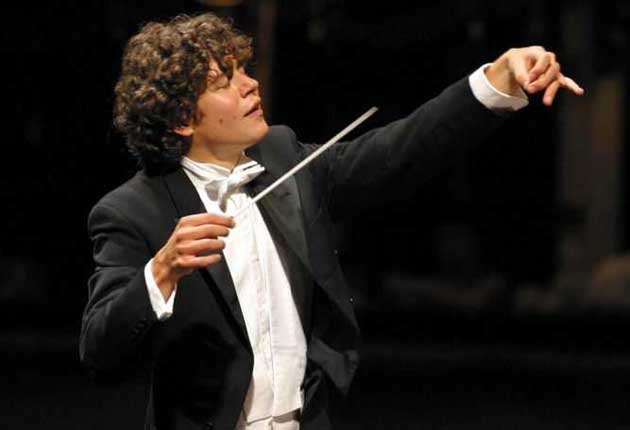Scottish Chamber Orchestar/Ticciati, City Halls, Glasgow

Robin Ticciati is already a hot ticket. At just 26, the music director of Glyndebourne's touring arm and principal guest conductor-elect of the Bamberg Symphony Orchestra has added another string to his bow, taking up his position as principal conductor of the Scottish Chamber Orchestra.
With just five programmes this season, he began his tenure boldly, inviting the Czech mezzo-soprano Magdalena Kozena, partner of his mentor Sir Simon Rattle, to share the platform with him. On their first collaboration, Ticciati – who, in his excitement, forgot his baton and had to dash offstage to retrieve it – proved himself an adept accompanist in half a dozen songs from Mahler's Des Knaben Wunderhorn.
It was Rattle who suggested that Kozena add Mahler to her repertoire – he must have known how ideally suited she would be to the folk-like charms of "Rheinlegendchen" and the stark characterisation of the little scena "Das irdische Leben". But it was in the contest between the cuckoo and the nightingale in "Lob des hohen Verstandes" that Kozena revelled with enthusiastic vitality. She came across as fresh and spontaneous, her silvery sheen tinged with a touch of metal.
The concert opened with Henze's First Symphony, a well-crafted piece that throws into relief the heavy influence of Hindemith on the composer. It may not be easy to preserve the coherence of the three short movements, but Ticciati applied a directness of expression which was particularly arresting – from the airy opening woodwind serenade to the glinting, fractured finale.
It might have seemed foolhardy to include Brahms's Second Symphony. As Rattle, who has recently recorded the complete Brahms symphonies, told me, "getting to know Brahms is an endless journey of discovery on which you can spend a lifetime and still not get there." But Ticciati, with his clean, unselfconscious technique and practical though not unpoetic approach, reflected the logic of the music while also conveying its emotional ambiguity.
But perhaps the most remarkable feature was the way the music was shaped within an exceptionally wide expressive range. It reminded the listener just how finely integrated the SCO is, on the whole, and highlighted the players' commitment to the music and their sparky new conductor.
Subscribe to Independent Premium to bookmark this article
Want to bookmark your favourite articles and stories to read or reference later? Start your Independent Premium subscription today.

Join our commenting forum
Join thought-provoking conversations, follow other Independent readers and see their replies
Comments